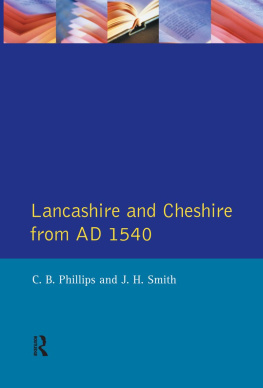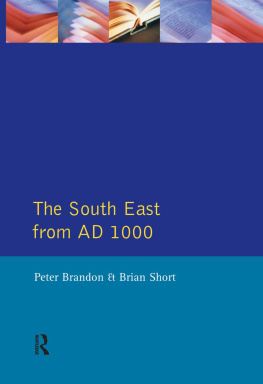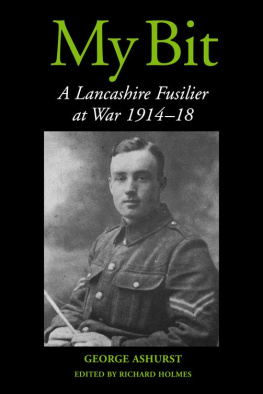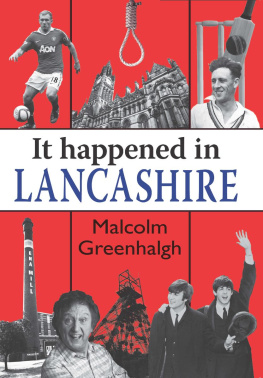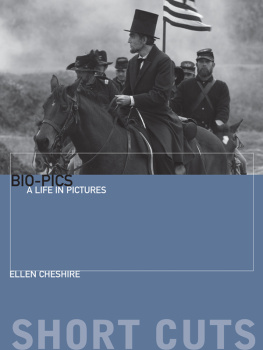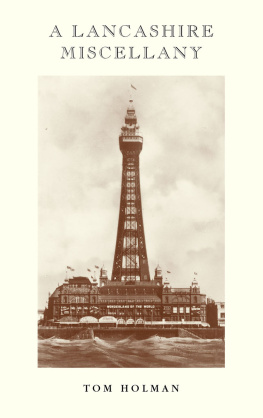Lancashire and Cheshire from AD 1540
Regional History of England
General Editors: Barry Cunliffe and David Hey
For full details of the series, see pp.
Lancashire and Cheshire from AD 1540
C. B. Phillips and J. H. Smith
First Published 1994 by Longman Group UK Limited
Published in the United States of America
by Longman Publishing
Published 2014 by Routledge
2 Park Square, Milton Park, Abingdon, Oxon OX14 4RN
711 Third Avenue, New York, NY 10017 USA
Routledge is an imprint of the Taylor & Francis Group, an informabusiness
Taylor & Francis 1994
All rights reserved; no part of this publication may be reproduced, stored in a retrieval system, or transmitted in any form or by any means, electronic, mechanical, photocopying, recording, or otherwise without either the prior written permission of the Publishers or a licence permitting restricted copying in the United Kingdom issued by the Copyright Licensing Agency Ltd., 90 Tottenham Court Road, London W1P 9HE
ISBN 0 582 49250 5 CSD
ISBN 978 0 582 49249 3 PPR
ISBN 978 1 315 83670 6 (elSBN)
British Library Cataloguing-in-Publication Data
A catalogue record for this book is available from the British Library
Library of Congress Cataloging in Publication Data
Phillips, C. B.
Lancashire and Cheshire from AD 1540/C. B.
Phillips and J. H. Smith.
p. cm. (Regional history of England)
Includes bibliographical references and index.
ISBN 0582492505. ISBN 0582492491 (pbk.)
1. Lancashire (England) History. 2. Cheshire (England)History. I. Smith, J. H., 1928. II. Title. III. Series.
DA670.L2P48 1993
942.7' 1 - dc20
9223399
CIP
Set by 3DD in 10/12pt Sabon Roman
Transferred to digital print on demand, 2002
Contents
The following institutions have all been most helpful and courteous in making material available: the Cheshire County Record Office; Chetham's Library, Manchester; the Geography Department Library, Manchester University; John Rylands University Library of Manchester; the Lancashire County Record Office; the Manchester Central Library; the public libraries at Blackpool, Lancaster and Northwich; the Sydney Jones Library, Liverpool University; Tameside Local Studies Centre; and Wirral Metropolitan Borough Archives.
Similarly the following individuals have provided information or helped to solve problems: Viscountess Ashbrook, Owen Ashmore, Theo Balderston, Blackwell Barber, Fred Broadhurst, Duncan Broady, Mr & Mrs J. A. Day, Douglas Farnie, Charles Foster, Phyllis Giles, Ian Goodier, Edward Horton, John Horton, Stephanie Jackson, Beryl Johnson, Jean Johnson, Douglas Kaye, Evelyn Lord, Bob Millward, Michael Moores, Nigel Morgan, Norris Nash, Derek Nuttall, Jonathan Pepler, Chris Perkins, Michael Powell, Mike Rose, G. Saunders, W. I. Smith, Sarah Turner, Pat Walker and Ken Wood.
We could not have written the book without all those whose published or unpublished work is cited in these pages, to them our best thanks.
Additional thanks are due to: Dr N. J. Higham who allowed us to read his chapter on the later medieval period for the volume which will precede ours in the series; the General Editor, Professor David Hey, who provided encouragement and correction in just the right balance when reading our drafts; Mrs Barbara Smith who provided invaluable help with some of the maps and with the index; contributors to the Cheshire Parish Register Project for sight of Project data; the Department of Archaeology, Manchester University, who gave us photographic assistance; the Dean and Chapter of Chester and the Cathedral Verger for allowing us access to photograph part of Chester Cathedral (); and the staff of Longman Higher Education who turned our typescript into a book.
Readers should note that are reproductions from material in our possession.
The responsibility for any errors there may be is ours.
The authors and publishers would like to thank the following for their permission to reproduce copyright material: Jill Henderson (Mrs Bewley) for from Lord Redcliffe-Maud's Report of the Royal Commission into Local Government in England, 196669 (1969).
Thanks are also due to the following for their permission to reproduce illustrative material: the County Archivist, Lancashire Record Office, for
Whilst every effort has been made to trace the owners of copyright material, in a few cases this has proved to be problematic and we take this opportunity to offer our apologies to any copyright holders whose rights we may have unwittingly infringed.
England cannot be divided satisfactorily into recognizable regions based on former kingdoms or principalities in the manner of France, Germany or Italy. Few of the Anglo-Saxon tribal divisions had much meaning in later times and from the eleventh century onwards England was a united country. English regional identities are imprecise and no firm boundaries can be drawn. In planning this series we have recognized that any attempt to define a region must be somewhat arbitrary, particularly in the Midlands, and that boundaries must be flexible. Even the South West, which is surrounded on three sides by the sea, has no agreed border on the remaining side and in many ways, historically and culturally, the River Tamar divides the area into two. Likewise, the Pennines present a formidable barrier between the eastern and western counties on the Northern Borders; contrasts as much as similarities need to be emphasized here.
The concept of a region does not imply that the inhabitants had a similar experience of life, nor that they were all inward-looking. A Hull merchant might have more in common with his Dutch trading partner than with his fellow Yorkshireman who farmed a Pennine smallholding; a Roman soldier stationed for years on Hadrian's Wall probably had very different ethnic origins from a native farmer living on the Durham boulder clay. To different degrees, everyone moved in an international climate of belief and opinion with common working practices and standards of living.
Yet regional differences were nonetheless real; even today a Yorkshireman may be readily distinguished from someone from the South East. Life in Lancashire and Cheshire has always been different from life in the Thames Valley. Even the East Midlands has a character that is subtly different from that of the West Midlands. People still feel that they belong to a particular region within England as a whole.
In writing these histories we have become aware how much regional identities may vary over time; moreover how a farming region, say, may not coincide with a region defined by its building styles or its dialect. We have dwelt upon the diversity that can be found within a region as well as upon common characteristics in order to illustrate the local peculiarities of provincial life. Yet despite all of these problems of definition, we feel that the time is ripe to attempt an ambitious scheme outlining the history of England's regions in twenty-one volumes. London has not been included - except for demonstrating the many ways in which it has influenced the provinces - for its history has been very different from that of the towns and rural parishes that are our principal concern.
In recent years an enormous amount of local research, both historical and archaeological, has deepened our understanding of the former concerns of ordinary men and women and has altered our perception of everyday life in the past in many significant ways, yet the results of this work are not widely known even within the regions themselves.


